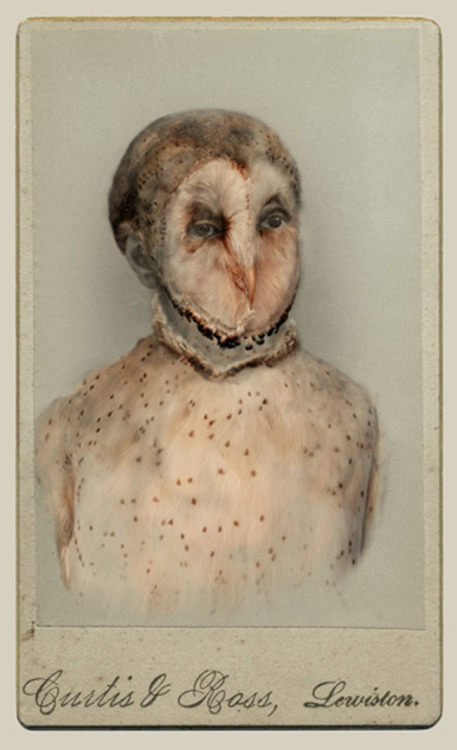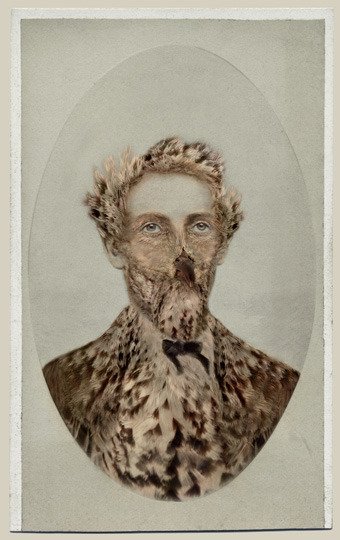#not old
“I’ve been collecting anonymous photographs for many years. During a retreat on the Toronto Islands, I had all these pictures and thought about these lost identities.
Photography has this innate promise that we can take a picture of someone and keep it. But overtime, these pictures somehow become dislodged from their origins, and the people photographed are lost.
There’s a theory from ancient times that says, ‘To capture a memory is like trying to capture a bird in an aviary of birds.
Most of these works are made from cartes de visite, which is a 19th century photographic process invented by André Disdéri in France. They were visiting cards people would trade amongst family and friends – sort of the Facebook of its day.
During the Victorian period, photographers would go out into the world and use cameras to capture everything: animals, exotic people and places. At the same time, there was the capturing of exotic animals.
I started looking at this idea of how the camera aided colonization: our sense of entitlement over other beings and creatures without a critical understanding of what that entitlement meant. The camera, in a way, was an extension of that attitude.
By producing a human-bird creature, I’m marrying the history of what was going on in that period. I’m creating these hybrid beings that sit somewhere between the human and the bird, but also look at the natural history of that time.
All the birds that I photographed in the Royal Ontario Museum’s collection for this series are North-American and are extinct or endangered. Other than the dinosaur, it was the first time that I ever sat in front of a creature that was extinct.
The image is almost life-size. The head of the person or bird is almost as big as your head. There’s a more bodily experience when you see the work in person. It has a different kind of presence.”
-Sara Angelucci, Aviary, 2013
with thanks to Wondereur
A little creepy but cool.
Love it all.
please admire these owlfolk
Post link
ed and stede ARE old btw they’re in their 40s theyre middle aged. they were played by men in their 40s ed has grey hair for gods sake you cannot seriously believe they were trying to convince us these are the 20-30 smth year olds of real life fame. and that’s ok!!! better even!! it makes their love story so much more impactful if they’re older cuz you’ve got one man who lived his entire life not having the chance to discover who he was and then finally finding himself in his middle age and another who has lived just as long building a legend that has become a prison of his own making and then finally after years and years of convincing himself he’s a monster can finally, finally just be himself and be loved by someone who understands him and sees him for who he is. making both ed and stede older in the show adds so much flavour to their characters and to their love story and we dont need to keep pretending it’s important to be historically accurate here!!! it’s ok!!!!





